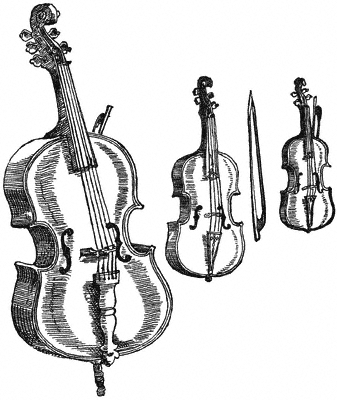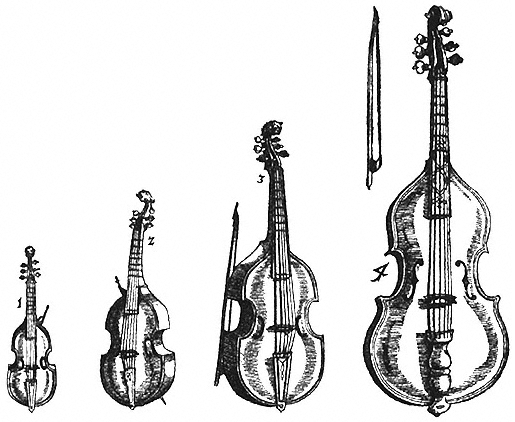
Although most music historians rely on artwork to try to date when the violin was first created, Peter Holman sought to establish the date of the violin's inception by examining how the early violin was used and played. He observed that in sixteenth century art music, melodic instruments were made in coordinated sets of several sizes (often three or four sizes pitched a fourth or fifth apart), and that these families of instruments were called consorts. Holman determined that the first usage of the violin was in a consort, and he concluded that the violin family emerged between 1495-1505 in Ferrara, Italy. Violin music seems to support Holman's assertion, because the majority of violin music from the 16th and early 17th centuries appears to be for violin consorts, and it was not until the mid-17th century that solo repertoire for the violin developed. [15] It is also interesting to note that solo repertory for the cello did not emerge until the late 17th century,[16][17]and although there were a few incidents of solo music being written for the viola and the double bass in the 17th century, it wasn’t until the mid-18th century that solo repertory for the viola and the double bass emerged.[18][19][20][21]
Figure 1.10 is an illustration of members of a violin consort, the instruments found in the violin family: violin (soprano violin), viola (alto-tenor violin) and violoncello (bass violin, also known as the cello). Another stringed instrument, the double bass or contrabass is often considered to be part of the violin family, but music scholars have differing views whether or not the double bass descended from the violin family or the viol family.

One of the reasons why it is difficult to ascertain the origin of the double bass (also known as contra bass, string bass, upright bass, bull fiddle, bass fiddle, or bass ), is due to the many variations in the shape, size, tuning and number of strings used in the construction of the double bass throughout history. Although there are some scholars who insist that the double bass descended from the violin family,[22] others are equally adamant that the bass evolved from the viol family (viol is the shortened name of viola da gamba). Many scholars simply state that the evolution of the double bass has included so many changes in its design, tuning and playing style, that it is impossible to conclusively determine its origins and definitively describe the predominant shape and style of bass playing in different eras. Even today, there are double basses shaped like a viol, others designed in the shape of a violin, and other variations in the number of strings used, construction of the instrument, and different modes of tuning.[23]
Figure 1.11 is an illustration of members of the viol family, and the instrument on the far right, the violine, resembles the viol shape still used to construct many basses today with its sloped shoulders and flat back.

© Copyright 2025 RK Deverich. All rights reserved.
Although this online cello class is provided free of charge, all rights are reserved and this content is protected by international copyright law. It is illegal to copy, post or publish this content in any form, and displaying any of this material on other websites, blogs or feeds is prohibited. Permission is given for individual users to print pages and perform music from this website for their personal, noncommercial use.